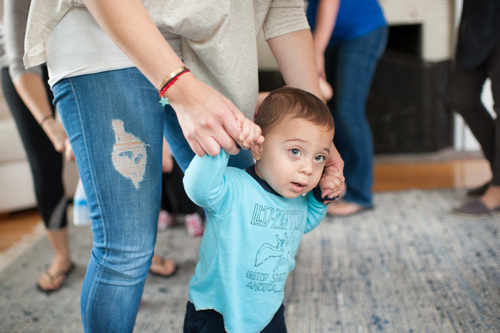How We Learn and Why It's Important
How we learn as adults is directly related to how we develop in the womb, as infants, and as toddlers. By understanding this process we can begin to notice what areas of our body and brain foundation may need some extra love. It's never too late to re-lay the proper foundation for unlimited and successful learning.
The Step-By-Step Process Of How We Learn:
1. New Information - What?!
When we first are presented with new information, especially if it does not mirror anything we have experienced before, our reaction to it is disjointed. We can literally have a "Huh?" or "What?" reaction. Newborns are the perfect example of this. Their tiny bodies react to the new experience of being in air, versus the liquid of the womb, by sporadically wiggling around. Just imagine their entire system saying, "What the heck is going on?"
2. Break It Down - One Limb at a Time
Once we have overcome the shock of being presented with the new information we break it down into parts. Each part leads into the next and we begin the learning process. The separate parts for the infant are head, one hand, another hand, one foot, the other foot. They begin to move each limb separately before being able to coordinate them together.
3. Details and the Big Picture - Front and Back
Have you ever noticed when you are focusing on the details as you learn you lean forward? The opposite happens when you are overwhelmed with the big picture, you physically lean back to take it all in. This is your body's understanding of focus. A balance between both allows new learning to successfully take place. The infant does the same. While playing with a new toy they lean forward to focus in, but if you call their name they lean back to take in you and the room.
4. Joy and Fear - Up and Down
When learning something new you may go back and forth between feeling overjoyed that you are understanding to feeling fearful that you might not ever understand. Even here balance between both is important. Fear can cause you to stop learning, but over excitement can lead to overlooking details and before you know it you are back where you started. My favorite example of this in little ones is when they are in push up position rocking from head to tail. Too far down and they are just squatting, too far up and they will fall flat on their face!
5. Communication - Right and Left
You know you are close to integration when you are able to communicate what you've learned. By sharing with others we ground our own understanding. In order to communicate the right and left sides of both body and brain have to be talking to each other. A good example of this integration is in a brand new walker. They walk like a robot with each side separate and sometimes even rock right to left when just standing. They must be able to use one side and then the other in order to someday walk, talk, write and read with ease.
6. Integration - Cross Body
You made it! You have learned something new and integrated it to the point where you don't have to return to any of the previous steps. For little ones the culmination of all their new learning comes together in crawling, walking and crossing their midline with ease.
Why This Is Important:
When we experience challenges later in life it can be because we skipped over or missed a step when laying the foundation in our body and in turn our brain when we were little. So take a moment to notice which steps of new learning are challenging for you. You may need to return to your physical foundation in order to rewire your mental learning capacity.
If you are a parent, where is your little one in their learning process? By noticing where they are and fully supporting them in that stage before going to the next, you are helping them lay the proper foundation for future learning.
Share what you notice and any questions in the comments!

